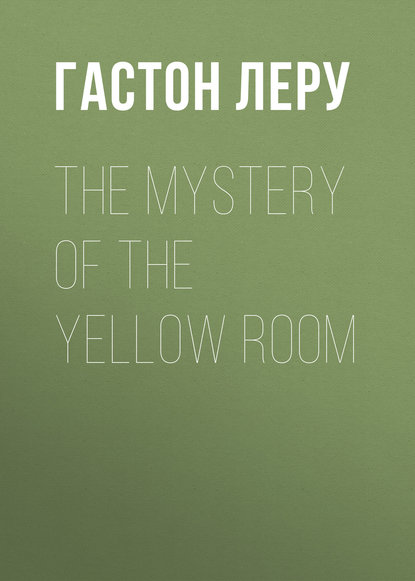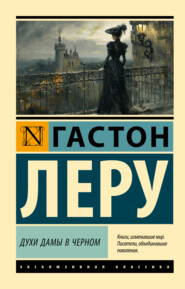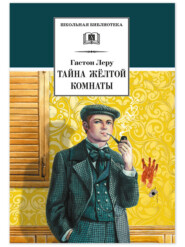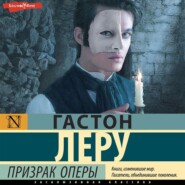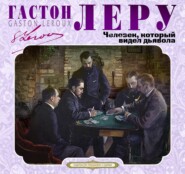По всем вопросам обращайтесь на: info@litportal.ru
(©) 2003-2025.
✖
The Mystery of the Yellow Room
Автор
Год написания книги
2018
Настройки чтения
Размер шрифта
Высота строк
Поля
2. Laboratory, with its two large, barred windows and its doors, one serving for the vestibule, the other for “The Yellow Room”.
3. Vestibule, with its unbarred window and door opening into the park.
4. Lavatory.
5. Stairs leading to the attic.
6. Large and the only chimney in the pavilion, serving for the experiments of the laboratory.
The plan was drawn by Rouletabille, and I assured myself that there was not a line in it that was wanting to help to the solution of the problem then set before the police. With the lines of this plan and the description of its parts before them, my readers will know as much as Rouletabille knew when he entered the pavilion for the first time. With him they may now ask: How did the murderer escape from “The Yellow Room”? Before mounting the three steps leading up to the door of the pavilion, Rouletabille stopped and asked Monsieur Darzac point blank:
“What was the motive for the crime?”
“Speaking for myself, Monsieur, there can be no doubt on the matter,” said Mademoiselle Stangerson’s fiance, greatly distressed. “The nails of the fingers, the deep scratches on the chest and throat of Mademoiselle Stangerson show that the wretch who attacked her attempted to commit a frightful crime. The medical experts who examined these traces yesterday affirm that they were made by the same hand as that which left its red imprint on the wall; an enormous hand, Monsieur, much too large to go into my gloves,” he added with an indefinable smile.
“Could not that blood-stained hand,” I interrupted, “have been the hand of Mademoiselle Stangerson who, in the moment of falling, had pressed it against the wall, and, in slipping, enlarged the impression?”
“There was not a drop of blood on either of her hands when she was lifted up,” replied Monsieur Darzac.
“We are now sure,” said I, “that it was Mademoiselle Stangerson who was armed with Daddy Jacques’s revolver, since she wounded the hand of the murderer. She was in fear, then, of somebody or something.”
“Probably.”
“Do you suspect anybody?”
“No,” replied Monsieur Darzac, looking at Rouletabille. Rouletabille then said to me:
“You must know, my friend, that the inquiry is a little more advanced than Monsieur de Marquet has chosen to tell us. He not only knows that Mademoiselle Stangerson defended herself with the revolver, but he knows what the weapon was that was used to attack her. Monsieur Darzac tells me it was a mutton-bone. Why is Monsieur de Marquet surrounding this mutton-bone with so much mystery? No doubt for the purpose of facilitating the inquiries of the agents of the Surete? He imagines, perhaps, that the owner of this instrument of crime, the most terrible invented, is going to be found amongst those who are well-known in the slums of Paris who use it. But who can ever say what passes through the brain of an examining magistrate?” Rouletabille added with contemptuous irony.
“Has a mutton-bone been found in “The Yellow Room”?” I asked him.
“Yes, Monsieur,” said Robert Darzac, “at the foot of the bed; but I beg of you not to say anything about it.” (I made a gesture of assent.) “It was an enormous mutton-bone, the top of which, or rather the joint, was still red with the blood of the frightful wound. It was an old bone, which may, according to appearances, have served in other crimes. That’s what Monsieur de Marquet thinks. He has had it sent to the municipal laboratory at Paris to be analysed. In fact, he thinks he has detected on it, not only the blood of the last victim, but other stains of dried blood, evidences of previous crimes.”
“A mutton-bone in the hand of a skilled assassin is a frightful weapon,” said Rouletabille, “a more certain weapon than a heavy hammer.”
“The scoundrel has proved it to be so,” said Monsieur Robert Darzac, sadly. “The joint of the bone found exactly fits the wound inflicted.
“My belief is that the wound would have been mortal, if the murderer’s blow had not been arrested in the act by Mademoiselle Stangerson’s revolver. Wounded in the hand, he dropped the mutton-bone and fled. Unfortunately, the blow had been already given, and Mademoiselle was stunned after having been nearly strangled. If she had succeeded in wounding the man with the first shot of the revolver, she would, doubtless, have escaped the blow with the bone. But she had certainly employeed her revolver too late; the first shot deviated and lodged in the ceiling; it was the second only that took effect.”
Having said this, Monsieur Darzac knocked at the door of the pavilion. I must confess to feeling a strong impatience to reach the spot where the crime had been committed. It was some time before the door was opened by a man whom I at once recognised as Daddy Jacques.
He appeared to be well over sixty years of age. He had a long white beard and white hair, on which he wore a flat Basque cap. He was dressed in a complete suit of chestnut-coloured velveteen, worn at the sides; sabots were on his feet. He had rather a waspish-looking face, the expression of which lightened, however, as soon as he saw Monsieur Darzac.
“Friends,” said our guide. “Nobody in the pavilion, Daddy Jacques?”
“I ought not to allow anybody to enter, Monsieur Robert, but of course the order does not apply to you. These gentlemen of justice have seen everything there is to be seen, and made enough drawings, and drawn up enough reports—”
“Excuse me, Monsieur Jacques, one question before anything else,” said Rouletabille.
“What is it, young man? If I can answer it—”
“Did your mistress wear her hair in bands, that evening? You know what I mean—over her forehead?”
“No, young man. My mistress never wore her hair in the way you suggest, neither on that day nor on any other. She had her hair drawn up, as usual, so that her beautiful forehead could be seen, pure as that of an unborn child!”
Rouletabille grunted and set to work examining the door, finding that it fastened itself automatically. He satisfied himself that it could never remain open and needed a key to open it. Then we entered the vestibule, a small, well-lit room paved with square red tiles.
“Ah! This is the window by which the murderer escaped!” said Rouletabille.
“So they keep on saying, monsieur, so they keep on saying! But if he had gone off that way, we should have been sure to have seen him. We are not blind, neither Monsieur Stangerson nor me, nor the concierges who are in prison. Why have they not put me in prison, too, on account of my revolver?”
Rouletabille had already opened the window and was examining the shutters.
“Were these closed at the time of the crime?”
“And fastened with the iron catch inside,” said Daddy Jacques, “and I am quite sure that the murderer did not get out that way.”
“Are there any blood stains?”
“Yes, on the stones outside; but blood of what?”
“Ah!” said Rouletabille, “there are footmarks visible on the path—the ground was very moist. I will look into that presently.”
“Nonsense!” interrupted Daddy Jacques; “the murderer did not go that way.”
“Which way did he go, then?”
“How do I know?”
Rouletabille looked at everything, smelled everything. He went down on his knees and rapidly examined every one of the paving tiles. Daddy Jacques went on:
“Ah!—you can’t find anything, monsieur. Nothing has been found. And now it is all dirty; too many persons have tramped over it. They wouldn’t let me wash it, but on the day of the crime I had washed the floor thoroughly, and if the murderer had crossed it with his hobnailed boots, I should not have failed to see where he had been; he has left marks enough in Mademoiselle’s chamber.”
Rouletabille rose.
“When was the last time you washed these tiles?” he asked, and he fixed on Daddy Jacques a most searching look.
“Why—as I told you—on the day of the crime, towards half-past five—while Mademoiselle and her father were taking a little walk before dinner, here in this room: they had dined in the laboratory. The next day, the examining magistrate came and saw all the marks there were on the floor as plainly as if they had been made with ink on white paper. Well, neither in the laboratory nor in the vestibule, which were both as clean as a new pin, were there any traces of a man’s footmarks. Since they have been found near this window outside, he must have made his way through the ceiling of “The Yellow Room” into the attic, then cut his way through the roof and dropped to the ground outside the vestibule window. But—there’s no hole, neither in the ceiling of “The Yellow Room” nor in the roof of my attic—that’s absolutely certain! So you see we know nothing—nothing! And nothing will ever be known! It’s a mystery of the Devil’s own making.”
Rouletabille went down upon his knees again almost in front of a small lavatory at the back of the vestibule. In that position he remained for about a minute.
“Well?” I asked him when he got up.
“Oh! nothing very important,—a drop of blood,” he replied, turning towards Daddy Jacques as he spoke. “While you were washing the laboratory and this vestibule, was the vestibule window open?” he asked.
“No, Monsieur, it was closed; but after I had done washing the floor, I lit some charcoal for Monsieur in the laboratory furnace, and, as I lit it with old newspapers, it smoked, so I opened both the windows in the laboratory and this one, to make a current of air; then I shut those in the laboratory and left this one open when I went out. When I returned to the pavilion, this window had been closed and Monsieur and Mademoiselle were already at work in the laboratory.”
“Monsieur or Mademoiselle Stangerson had, no doubt, shut it?”





